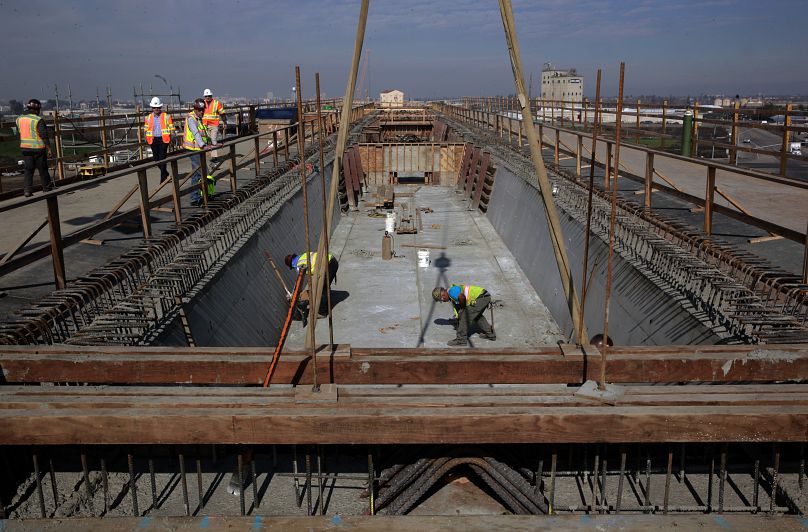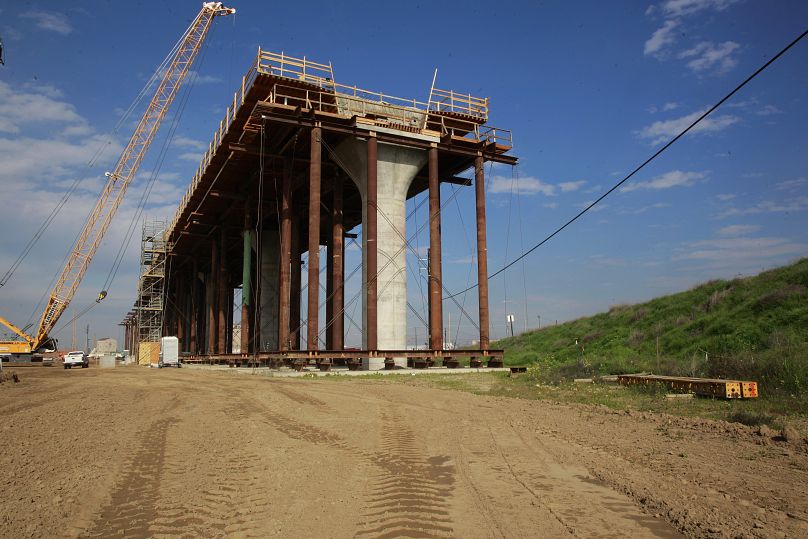California’s long-awaited high speed train will be solar powered, according to the California High-Speed Rail Authority.
It’s been a rocky road so far for the California High-Speed Rail Authority’s promising new project.
This high speed train connecting 1287.5 kilometres of the state was called “a bullet train that is both one of the most expensive per mile and one of the slowest in the world” by Elon Musk.
It was to be the start of a revolutionary new transport system connecting the west coast of the US up to Vancouver in Canada. It would also go east to Las Vegas before eventually threading its way across the entire continent. The scheme was endorsed by Presidents Obama and Biden.
When approved in 2008, the project’s estimated price tag was $33 billion USD (€30 billion) and its scheduled opening date was 2020. In 2023, the system is nowhere near finished and has racked up $19.8 billion USD (approximately €18 billion) so far, with a total estimated bill of $128 billion USD (€116 billion).
Last month however, 15 years after its initial approval, the California High-Speed Rail Authority announced that the new system would now be fully solar-powered, leaning into its initial promise as an environmentally friendly alternative to highways and flights.
How much power does the train need?
To power this behemoth of a train, 44 megawatts of energy, theoretically generated by 552 acres of solar panels will be required. On board batteries will aim to store 62 megawatt hours of power.
Much of this energy will be used simply to propel the train, which is estimated to reach top speeds of approximately 354 km/h. However, a large proportion will also be required to help the vehicle manage the intense Californian climate and to keep moving if local utilities fail.
According to Margaret Cederoth, the authority’s director of planning and sustainability, they are currently in talks with various energy suppliers in an attempt to secure a $200 million USD (€181 million) utility-scale system which they will own and operate.
The high speed service will connect important parts of the state
Through 10 phases of implementation, the system will eventually connect passengers from San Diego all the way up to Sacramento. It will travel via Los Angeles, Central Valley, Fresno and San Jose.
Currently 191.5 kilometres of track are under construction.
Phase one focuses on the 836.8 kilometres between Merced in San Francisco and Anaheim in Los Angeles. Phase two seeks to improve existing connections between the locations in preparation for the vehicle’s use.
Construction has been delayed by a multitude of problems
Recent years have seen significant funding problems arise for the project, and subsequently much criticism.
Many critics questioned the route plan – specifically why it was running through California’s Central Valley. According to Brian Kelly, CEO of the California High-Speed Rail Authority, connecting this area was a key component of the project’s approval.
The Central Valley is historically underfunded, despite housing approximately 4 million residents. As well as connecting six of the state’s ten largest cities, developing economic growth in this area was primary to the project.
When it comes to funding issues, Brian admits, “We knew we’ve had a funding gap ever since the project started. What I know is this: The earlier we build it, the cheaper it will be.”
Delays and soaring costs were partly informed by the environmental clearance needed to build the track, which traverses miles of private land. Negotiating pay outs with land owners and local authorities, as well as ensuring the project meets environmental standards, cost $1.3 billion USD (€1.2 billion) alone.
However, Margaret Cederoth, the authority’s director of planning and sustainability, told Forbes that work on a renewable energy source could begin by 2026 to ensure it’s ready to power trains by 2030, the target opening date for the railway’s initial segment.













